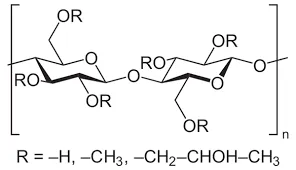
Aug . 06, 2024 09:58 Back to list
Exploring the Properties and Applications of Hydroxyalkyl Cellulose in Various Industries and Formulations
Hydroxyalkyl Cellulose A Versatile Polymer in Various Applications
Hydroxyalkyl cellulose (HAC) is a modified natural polymer derived from cellulose, a fundamental component of plant cell walls. The modification process typically involves the substitution of hydroxyalkyl groups in place of hydroxyl groups on the cellulose backbone. Commonly used hydroxyalkyl groups include hydroxyethyl and hydroxypropyl groups, leading to products known as hydroxyethyl cellulose (HEC) and hydroxypropyl cellulose (HPC), respectively. These modifications enhance the solubility, stability, and functional characteristics of cellulose, making HAC a versatile agent employed across various industries.
One of the most significant attributes of hydroxyalkyl cellulose is its solubility in water. Unlike native cellulose, which is insoluble, HAC can dissolve in both cold and hot water, depending on the degree of substitution and molecular weight. This property is particularly beneficial in formulations where a thickening agent or binder is required, such as in paints, coatings, and adhesives. By providing excellent viscosity control, HAC can optimize the texture and application properties of these products, ensuring even coverage and smooth finishes.
In the pharmaceutical industry, hydroxyalkyl cellulose serves as an essential excipient in drug formulation. Its film-forming properties are advantageous for creating controlled-release drug delivery systems. For instance, HPC is commonly used to produce hydrophilic matrices that regulate the release rate of active pharmaceutical ingredients, ensuring sustained therapeutic effects. Furthermore, its compatibility with a wide array of substances makes it an ideal candidate for various dosage forms, including tablets, capsules, and topical ointments.
hydroxyalkyl cellulose

Cosmetics and personal care products also benefit from the incorporation of hydroxyalkyl cellulose
. As a thickener and stabilizer, HAC contributes to the desired viscosity and texture in creams, lotions, and gels. Its ability to form a protective film on the skin enhances moisturizing properties, making it a popular ingredient in skincare formulations. Additionally, thanks to its non-ionic nature, HAC is generally well-tolerated and less likely to cause irritation, making it suitable for sensitive skin products.In the food industry, hydroxyalkyl cellulose is gaining prominence as a food additive. Recognized as a safe ingredient by regulatory bodies, HAC acts as a thickener, stabilizer, and emulsifier in various food products. It enhances the mouthfeel and texture of sauces, dressings, and dairy products. Moreover, its capacity to retain moisture helps improve the shelf life and quality of food items, making it valuable in the production of baked goods and processed foods.
The versatility of hydroxyalkyl cellulose extends to construction materials as well. By improving the workability and adhesion properties of cement and mortar mixtures, HAC enhances the mechanical performance and durability of building materials. Its water-retention ability ensures that the mixtures remain workable for extended periods, facilitating smooth application and reducing the risk of cracking during the curing process.
In conclusion, hydroxyalkyl cellulose stands out as a multifunctional polymer with a wide range of applications across diverse industries. Its properties, such as water solubility, thickening ability, and film-forming characteristics, render it invaluable in pharmaceuticals, cosmetics, food, and construction. As the demand for sustainable and high-performance materials continues to grow, hydroxyalkyl cellulose will likely play an increasingly crucial role in innovative product formulations, contributing to improvements in consumer safety, product performance, and overall quality of life. The future looks promising for this remarkable polymer as it finds new applications and enhances existing formulations in our daily lives.
-
Versatile Hpmc Uses in Different Industries
NewsJun.19,2025
-
Redispersible Powder's Role in Enhancing Durability of Construction Products
NewsJun.19,2025
-
Hydroxyethyl Cellulose Applications Driving Green Industrial Processes
NewsJun.19,2025
-
Exploring Different Redispersible Polymer Powder
NewsJun.19,2025
-
Choosing the Right Mortar Bonding Agent
NewsJun.19,2025
-
Applications and Significance of China Hpmc in Modern Industries
NewsJun.19,2025







